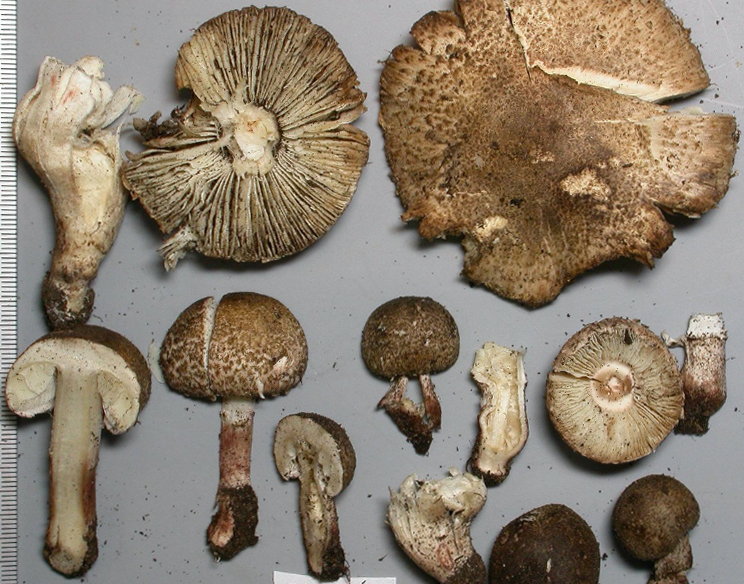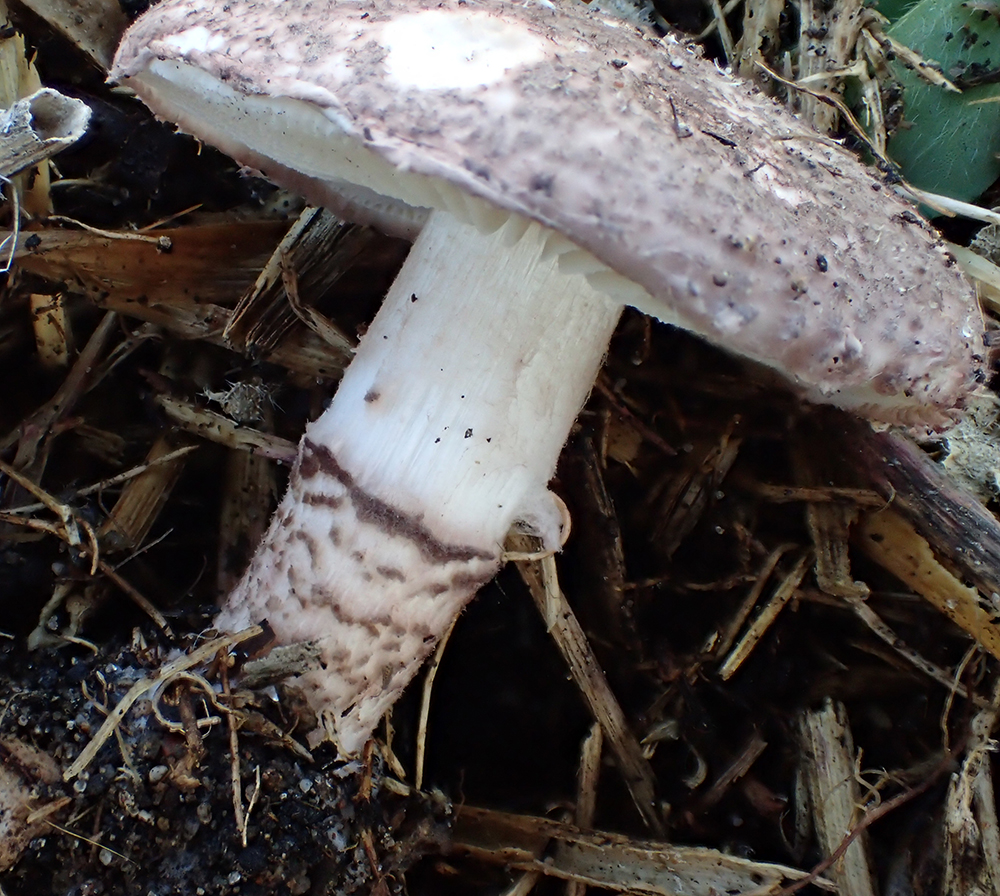
Lepiota brunneoincarnata. Collection of the mushroom involved in a dog poisoning case. Scale divisions: 1 mm. Photo: P.S. Catcheside.
For some time, Lepiota brunneoincarnata is known to occur in South Australia and a similar species, Lepiota cristata, occurs in parts of New Zealand. The State Herbarium of South Australia has now published a new fact-sheet on this poisonous fungus (500kb PDF).
At the State Herbarium of South Australia, we have collections of Lepiota from at least 6 poisoning cases, some human and some dogs, over the last 5-8 years. While microscopy was done at the time of each case, the condition of samples when we receive them can be problematic. In the last few months we have extracted DNA and confirmed the identity of 3 of the past cases as L. brunneoincarnata, based on analyses of internal transcribed spacer (ITS) DNA region data. The next step is to complete tests for amatoxin concentration, to determine how much is a deadly dose.

Lepiota brunneoincarnata. Fungus involved in a human poisoning case, showing the typical white gills, purplish-brown fibrils on the cap, and the skirt on the stem with a purplish-brown rim and purplish-brown fibrils in patches below the skirt. Photo: T. Lebel.
Amatoxin poisoning upon ingestion of species of Lepiota may have a deadly outcome, but is not seen as often as it is from the genus Amanita. Amatoxins inhibit nuclear RNA polymerase II, and this inhibition results in impaired protein synthesis and cell death. Because the liver is an organ in which protein synthesis and cell turnover are high, it suffers the most distinct damage in amatoxin poisoning. The damage appears to be directly proportional to the dose of toxin ingested (i.e. more eaten, more damage). Amatoxins are contained in some Amanita, Galerina and Lepiota species. In Australia and New Zealand, Amanita phalloides (death cap) is known to have a high concentration of amatoxins, and to have been the cause of over 10 deaths in the last 15 years (a far lower rate than occurs in many overseas countries). Some Lepiota species (L. brunneoincarnata, L. brunneolilacina, L. helveola, L, josserandii, L. spiculata, L. venenata) are also known to be very toxic.
These exotic fungi are found in urban areas, mulched gardens or lawns. Don’t make the mistake that just because you have put mushroom compost in your garden beds, that edible Agaricus field mushrooms are the only ones that will grow!
State Herbarium fact-sheets are also available on the poisonous fungi Amanita phalloides (death cap) (700kb PDF) and Agaricus xanthodermus (yellow stainer) (650kb PDF).

Some fungi that have been confused with Lepiota brunneoincarnata in the past: Chlorophyllum brunneum (left), Leucoagaricus leucothites (middle) and Agaricus sp. (right). Photos: T. Lebel & K. Syme.
Written by State Herbarium mycologist Teresa Lebel
and Hon. Research Associate Pam Catcheside.
